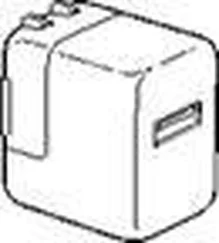To everyone’s surprise, the early Soviet industrialization was a big success, most graphically proven by its ability to repel the Nazi advance on the Eastern Front during the Second World War. Income per capita is estimated to have grown at 5 per cent per year between 1928 and 1938 – an astonishingly rapid rate in a world in which income typically grew at 1–2 per cent per year. [41] Calculated from A. Maddison, The World Economy: Historical Statistics (Paris: OECD, 2003), p. 100, table 3 c.
This growth came at the cost of millions of deaths – from political repression and the 1932 famine. [42] To simplify the story, the 1932 famine happened because too much food was shipped out of the rural areas, following the 1928 agricultural collectivization. The rapidly rising urban population had to be fed, and grains had to be exported to earn foreign exchanges with which to import advanced machinery that the Soviet Union needed for industrialization.
However, the scale of the famine was not known at the time, and many were impressed by Soviet economic performance, especially given that capitalism was then on its knees, following the Great Depression of 1929.
Capitalism gets depressed: the Great Depression of 1929
The Great Depression was an even more traumatic event for the believers in capitalism than the rise of socialism. This was especially the case in the US, where the Depression started (with the infamous 1929 Wall Street crash) and which was the hardest hit by the experience. Between 1929 and 1932, US output fell by 30 per cent and unemployment increased eightfold, from 3 per cent to 24 per cent. [43] These numbers and information in the rest of this paragraph are from C. Dow, Major Recessions: Britain and the World , 1920–1995 (Oxford: Oxford University Press, 1998), p. 137, table 6.1 (for 1929–32) and p. 182 (for 1932–7).
It was not until 1937 that US output regained its 1929 level. Germany and France also suffered badly, with their outputs falling by 16 per cent and 15 per cent respectively.
One influential view, propagated by neo-liberal economists, is that this large but totally manageable financial crisis was turned into a Great Depression because of the collapse in world trade caused by the ‘trade war’, prompted by the adoption of protectionism by the US through the 1930 Smoot-Hawley Tariffs. This story does not stand up to scrutiny. The tariff increase by Smoot-Hawley was not dramatic – it raised the average US industrial tariff from 37 per cent to 48 per cent. Nor did it cause a massive tariff war. Except for a few economically weak countries such as Italy and Spain, trade protectionism did not increase very much following Smoot–Hawley. Most importantly, studies show that the main reason for the collapse in international trade after 1929 was not tariff increases but the downward spiral in international demand, caused by the adherence by the governments of the core capitalist economies to the doctrine of balanced budget. [44] This point is explained in an accessible way by Stephanie Flanders, the BBC economics journalist, at the following blog post: http://www.bbc.co.uk/blogs/thereporters/stephanieflanders/2009/02/04/index.html.
After a big financial crisis like the 1929 Wall Street crash or the 2008 global financial crisis, private-sector spending falls. Debts go unpaid, which forces banks to reduce their lending. Being unable to borrow, firms and individuals cut their spending. This, in turn, reduces demands for other firms and individuals that used to sell to them (e.g., firms selling to consumers, firms selling machinery to other firms, workers selling labour services to firms). The demand level in the economy spirals down.
In this environment, the government is the only economic actor that can maintain the level of demand in the economy by spending more than it earns, that is, by running a budget deficit. However, in the days of the Great Depression, the strong belief in the doctrine of the balanced budget prevented such a course of action. As tax revenues were falling due to reduced levels of economic activity, the only way for them to balance their budgets was to cut their spending, leaving nothing to arrest the downward demand spiral. [45] For example, it is estimated that the US government fiscal policy added a mere 0.3 per cent to the GDP between 1929 and 1933, against the 31.8 per cent fall during the same period (Dow, Major Recessions , p. 164, table 6.11), while UK fiscal policy added a mere 0.4 per cent, against the 5.1 per cent fall in GDP between 1929 and 1932 (ibid., p. 192, table 6.23).
To make things worse, the Gold Standard meant that their central banks could not increase the supply of money for fear of compromising the value of their currencies. With restricted money supply, credit became scarce, restricting private-sector activities and thus reducing demand even further.
Reform begins: the US and Sweden lead the way
The Great Depression left a lasting mark on capitalism. With it came widespread rejection of the laissez-faire doctrine and serious attempts to reform capitalism.
The reforms were particularly widespread and far- reaching in the US, where the Depression was the greatest and lasted the longest. The so-called First New Deal programme (1933–4) under the new president, Franklin Delano Roosevelt, separated the commercial and investment arms of banks (the 1933 Glass-Steagall Act), set up the bank deposit insurance system to protect small savers against bank failures, tightened stock market regulation (the 1933 Federal Securities Act), expanded and strengthened the farm credit system, provided a minimum farm price guarantee and developed infrastructure (such as the Hoover Dam – that’s the one you see in the 1978 Superman movie, starring the late Christopher Reeve), and so on. There were even more reforms under the so-called Second New Deal (1935–8), including the Social Security Act (1935), which introduced old age pensions and unemployment insurance, and the Wagner Act (1935), which strengthened trade unions.
Sweden was another country where significant reforms were introduced. Riding on the back of the public discontent with liberal economic policies, which left unemployment at 25 per cent, the Social Democratic Party came to power in 1932. Income tax was introduced – surprisingly belatedly for a country that is today considered the bastion of income tax (Britain introduced income tax in 1842 and even the famously anti-tax US in 1913). The revenues were used for expanding the welfare state (unemployment insurance was introduced in 1934, and the old-age pension was raised) and for helping small farmers (farm credits were expanded, and minimum prices were guaranteed). In 1938, the centralized trade union and the centralized employers’ association signed the Saltsjöbaden Agreement, establishing industrial peace.
Other countries did not go as far as the US and Sweden in reforming capitalism, but their reforms presaged the shape of the things to come after the Second World War.
Capitalism falters: growth slows down and socialism outperforms capitalism
The turmoil of the 1914–45 period reached its peak with the outbreak of the Second World War, which killed tens of millions of people, both soldiers and civilians (higher estimates put the death toll at 60 million). The war resulted in the first reversal in the acceleration in economic growth since the early nineteenth century. [46] . Per capita income growth rate for the world fell from 1.31 per cent during 1870–1913 to 0.88 per cent during 1913–50. Maddison, The World Economy , p. 383, table A. 8.
Читать дальше












